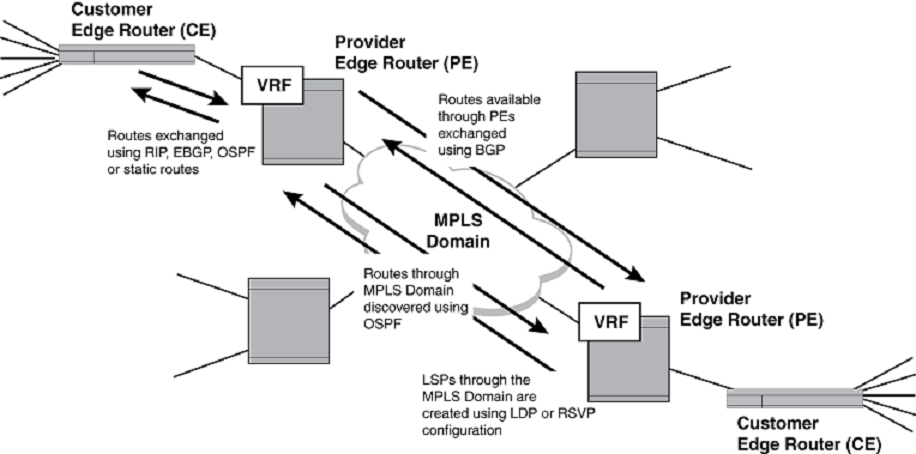Creating Routes in a BGP or MPLS VPN
The diagram below illustrates the various components involved in creating routes in a BGP or MPLS VPN.
A CE device maintains the connection to the customer‘s network and is configured within that network to share access to its available network prefixes and to receive packets from other VPN-connected networks. That CE is connected to a PE through an interface that is configured for a specified VRF for connection to the BGP or MPLS VPN. This connection places the CE in the BGP or MPLS VPN. Routes that are available through the CE are then made available to the PE using , OSPF, EBGP or a static route. These routes are then stored in the VRF where they are associated with the VPN. The route from the CE to the PE is kept in the CEs routing table.
The PE device is connected to the MPLS domain through one or more interfaces. The PE must advertise the routes that it has available in it‘s VRF tables across the MPLS domain to its PE peers. Available routes in the VRF are prepended with a Route Distinguisher (RD) and advertised across the MPLS domain using IBGP. The PEs can either be configured for IBGP as either full mesh or with a route reflector to allow greater scalability. Routes that are advertised from other PEs in the VPN are received at the PE and collected in the VRF table. This procedure establishes which other PEs are in the VPN and what networks are available through them.
OSPF or ISIS is used as the Interior Gateway Protocol (IGP) within the service provider's MPLS domain to provide connectivity. OSPF or ISIS also populates the traffic engineering (TE) used by RSVP-TE.
Labeled Switch Paths (LSPs) are then created using Label Distribution Protocol (LDP), Resource Reservation Protocol (RSVP) configurations in the MPLS domain. Using this protocol, the PE obtains an LSP required to switch traffic to the other PEs. The network is now populated with all of the routes required to forward packets between the customer‘s networks.


